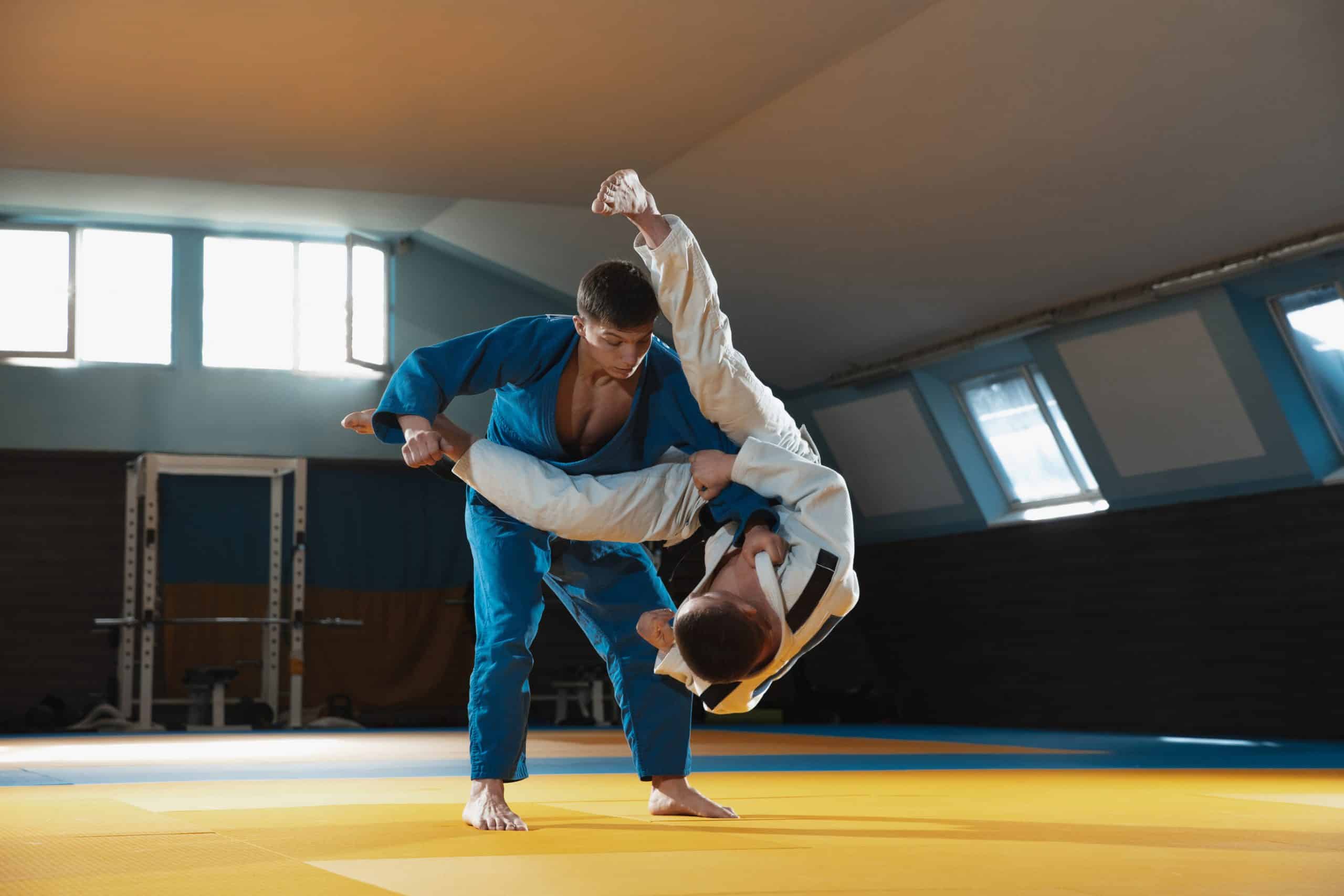What Are the Specific Strength Training Protocols for Competitive Judo Fighters?

Judo, a dynamic combat sport, demands both physical prowess and mental agility from its practitioners, known as judokas. Elite judo athletes train intensively to ensure their bodies can endure the sport’s rigorous demands. Among the various elements of their training regimen, strength training plays a vital role in enhancing their overall performance. This article delves into the specific strength training protocols followed by competitive judo fighters.
Understanding the Physical Requirements of Judo
Before diving into the specific strength training protocols, it’s essential to comprehend the physical demands of judo. This sport requires judokas to possess high levels of strength, power, and endurance.
Additional reading : What Are the Long-Term Effects of High-Intensity Plyometrics on Sprinters’ Joint Health?
Judo consists of three distinct phases: the gripping phase, the throwing phase, and the groundwork phase. Each phase demands different physical attributes. The gripping phase requires judokas to have strong gripping strength and endurance to control their opponents. The throwing phase demands explosive strength and power to execute efficient judo throws. The groundwork phase, on the other hand, requires muscular endurance and strength to control, pin, or submit the opponent on the mat.
A judo match lasts for a specified time, often five minutes for males and four minutes for females. Judokas need to maintain their strength and energy throughout this period, indicating the need for excellent muscular and cardiovascular endurance.
This might interest you : How Can Mixed Reality Training Simulators Aid in Cricket Batting Techniques?
The Importance of Strength Training in Judo
Strength training is a crucial aspect of a judoka’s preparation. It enhances their power, helps them maintain grip, and improves their resilience, thereby enabling them to perform better in their sport.
Strength is the ability of a muscle or muscle group to exert a maximum force against resistance. In judo, strength plays a decisive role in a judoka’s performance. A study by Franchini et al., available on PubMed, revealed that elite judokas who incorporate strength training into their regimen exhibit superior performance levels.
But what does strength training for judo involve? It’s more than just lifting weights. It’s about targeted, sport-specific exercises designed to improve a judoka’s performance in different combat scenarios.
Strength Training Protocols for Judo
Strength training protocols for judo are tailored to meet the sport’s unique demands. They focus on improving grip strength, explosive power, and muscular endurance.
Grip Strength
Grip strength is vital for judokas as it allows them to control their opponents effectively. A strong grip can facilitate successful throws and groundwork techniques. Exercises like plate pinches, farmer’s walks, and towel pull-ups can significantly improve grip strength.
Explosive Power
Explosive power is crucial for executing throws in judo. Plyometric exercises, such as box jumps and medicine ball throws, can help develop this attribute. Additionally, Olympic lifts like clean and jerk or snatch can enhance a judoka’s explosive power.
Muscular Endurance
Muscular endurance is essential for maintaining performance throughout a match. High-intensity circuit training, including exercises like push-ups, pull-ups, squats, and kettlebell swings, can improve muscular endurance.
Remember, the goal of these exercises is not to build bulky muscles, but to develop functional strength that can enhance a judoka’s performance on the mat.
Implementing Strength Training in a Judo Athlete’s Regime
Incorporating strength training into a judoka’s regime requires careful planning. The training should align with the athlete’s competition schedule to ensure they peak at the right time.
A comprehensive strength training program for judokas should include three stages: the general preparation phase, the specific preparation phase, and the competition phase.
During the general preparation phase, the focus should be on developing overall strength. This involves full-body workouts and exercises that target large muscle groups.
The specific preparation phase involves exercises that mimic the movements in judo, focusing on the muscle groups most used in the sport.
The competition phase concentrates on maintaining the strength and power developed during the previous phases. This phase involves lighter workouts to prevent fatigue and injury.
Remember, judokas, like other athletes, should not neglect rest and recovery. Proper rest between training sessions is crucial for muscle repair and growth, leading to improved performance.
A Scholar’s Perspective on Judo Strength Training
Scientific research has validated the positive impact of strength training on judo performance. A study by Franchini et al. on elite judokas concluded that strength training contributes significantly to their success.
However, the researchers also underscored the importance of implementing a judo-specific strength training regimen. They recommended exercises that mimic the actions in judo to improve sports-specific strength.
In conclusion, strength training is a crucial component of judo training. However, it should not be the only focus. A well-rounded judoka should also emphasize technique, agility, flexibility, stamina, and mental training. After all, judo is not merely about physical strength; it is also a test of strategy, skill, and spirit.
Periodized Strength Training for Judo
Periodized strength training is an important part of a judo athlete’s regime. Periodization refers to systematically planning training sessions to achieve peak performance at the right time, typically for a competition. It’s a strategy that’s widely adopted in strength and conditioning training programs.
According to Google Scholar, studies have shown that periodized strength training improves judokas’ performance more significantly compared to non-periodized training. This training approach involves different phases that focus on various aspects of fitness, such as muscular strength, power, endurance, and explosive power.
For instance, the macrocycle, which is the longest training period, is often a year and is subdivided into the preparatory, competitive, and transition periods. The preparatory period is further divided into general and specific preparation phases. The general preparation phase focuses on developing basic strength and conditioning, while the specific preparation phase involves judo-specific strength exercises.
As the competition approaches, judo athletes shift their focus to high-intensity, low-volume training in the competitive phase. This shift helps maintain the strength gains made during the preparatory phase and also prevent burnout or injury. Post-competition, the transition period provides a much-needed rest for judokas, allowing for recovery and preparation for the next macrocycle.
A study available on PubMed Google by Franchini et al. highlighted that periodized strength training allows judo athletes to enhance their strength, power, and endurance effectively, contributing to better performance during matches.
Contrast Training for Advanced Judo Performance
Contrast training is another effective strength training protocol for advanced judo athletes. This training method involves alternating between heavy and light loads in the same workout, aiming to enhance strength and power. The basic idea behind contrast training is to perform a strength exercise immediately followed by a power exercise that uses similar muscle groups.
The benefits of this training method are substantial. According to a PMC free article, contrast training can significantly enhance muscular power, reactive strength, and rate of force development – all crucial factors for judo performance.
For instance, a judoka could perform a set of heavy back squats followed by a set of box jumps. The back squats develop muscular strength, while the box jumps aim to translate this strength into power, essential for explosive movements like throws in judo.
However, it’s important to note that contrast training is an advanced training technique. It’s typically recommended for high-level judokas who have already achieved a solid strength base. This protocol, as the strength cond res study suggests, can help judokas produce more number throws during matches due to improved explosive power.
Conclusion
Strength training is undeniably critical for judo athletes. From basic grip strength exercises to advanced protocols like periodized training and contrast training, a well-planned strength training regimen can substantially improve judokas’ performance.
However, as any judo fitness test would indicate, physical strength is just one aspect of a judoka’s fitness. Agility, flexibility, cardiovascular endurance, and mental fortitude are equally important. A high heart rate could suggest a need for better cardiovascular conditioning, while difficulty in performing judo-specific movements might signal a need for more flexibility training.
Ultimately, the goal of strength training for judo athletes is not just about building muscle mass. It’s about developing functional, sport-specific strength that can boost performance on the mat. From the gripping phase to the throwing phase and the groundwork phase, every element of a judo match requires a unique set of physical strengths and skills. Therefore, a judoka’s training program should reflect these varied demands to ensure comprehensive preparedness.
As the saying goes, "Judo is not just a sport, but a way of life." Beyond the mat, the discipline, strength, and resilience developed through judo training can carry over into other aspects of life. The journey to becoming an elite judoka is challenging and rigorous, but with the right training protocols, it is undoubtedly rewarding.
